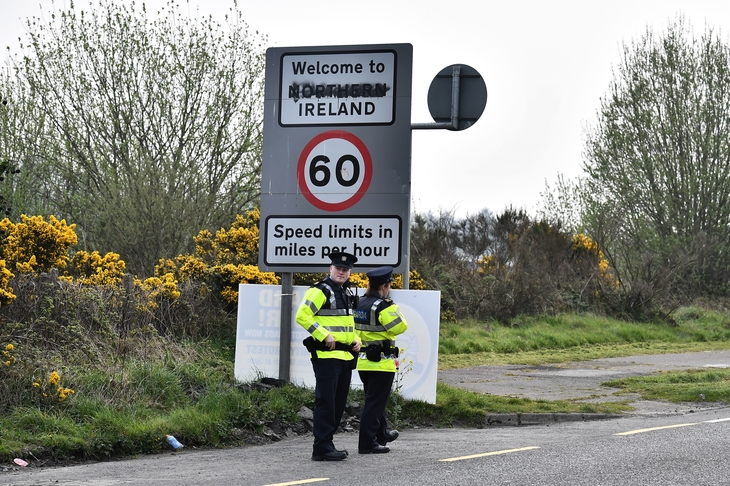The latest Operation Yellowhammer disclosures put me in mind of a book I read a few years ago describing an unsettlingly plausible zombie outbreak in Britain.
When the streets were too full of undead shamblers for the government to ignore, the Home Secretary asked officials who were barricaded in his office for the contingency plan to deal with this apocalypse. He was handed one sheet of A4 on which was simply written, ‘run away screaming.’
I wonder whether Michael Gove had anything much more coherent to rely on when he took up the reins at the Cabinet Office at the back end of July and asked for the latest no-deal arrangements? Barely a month before, the senior civil servant at the Department for Exiting the European Union (DExEU) responsible for contingency planning had bailed for the private sector, hot on the heels of the HMRC mandarin in charge of frictionless border preparations. Maybe not running, maybe not screaming – but certainly worrying. There has also been much dark talk about officials dragging their feet in preparation for outcomes that many are deeply ideologically opposed to. We might have the best civil service in the world but they are currently being asked to pilot the ship of state through an unprecedented constitutional and logistical maelstrom.
Whatever the rights and wrongs of no deal, the least we ought to expect is that the government has a credible strategy to anticipate and mitigate the potential outcomes of leaving the European Union without a deal on 31 October. Governments are supposed to be good at planning for the unthinkable. The art of no deal, as ‘the Donald’ might say, is to have an entire government unit supposedly devoted to wargaming and mitigating the significant disruption that may ensue from Halloween. Although the six month extension was granted in April, the prospect of crashing out of the EU has been with us for significantly longer. So what have they been doing to shield us from the worst excesses of no deal? And how would we know if they’ve done it properly?
We don’t have much more information since this Yellowhammer document first leaked to Rosamund Urwin of the Sunday Times last month. In its official guise, the weirdly titled, ‘reasonable worst case scenario’ has mutated from a ‘base scenario’ with much of the rest of the document being a cut and paste job. Hardly the most reassuring demonstration of a focused executive responding to fluid events.
But the key deficiency of Yellowhammer II has not been fully understood by the media. It is nowhere near the kind of action plan that allows us to judge the government’s competence. It is not the cherry on top of the trifle. It is far closer to a sponge base, soaked with uncertainty.
Those of us who have worked in the crisis management business will recognise the government’s official Yellowhammer report as merely the starting point of what we should expect – a detailed, well-constructed and stress-tested set of response plans.
Contingency planning starts by identifying threats and their worst-case outcomes. From there, a plan should work backwards through a series of mitigating actions to ensure these threats are as close to ‘never’ events as is reasonably practicable. When the plans are drawn up – in the case of Yellowhammer, across and within government departments depending on the nature of the specific threat – they should be rigorously gamed as ‘real-time’ exercises to ensure they work properly. If they don’t survive an encounter with reality, they should be refined and repeated until they do. The only evidence of this sort of real-time contingency planning has hardly been encouraging. In January a test of an emergency plan to stop traffic congestion in Kent involved just 89 out of a predicted 6,000 lorries, outside rush hour and in a coned-off bit of the A256. It was described as a ‘waste of time’ by drivers taking part.
Our ports and borders should be the front line for effective scenario response planning. Nowhere more so than on the Northern Ireland frontier, where only a matter of weeks ago dissident republican terrorists demonstrated their continuing determination to murder police officers in County Fermanagh. Police aid to Northern Ireland is fraught with difficulty and freighted with meaning. We should expect that plans to deploy GB police officers to sensitive areas of the border, unarmed and facing a potentially lethal threat, are in place and adequate. But it doesn’t even feature in any specific way in the high-level planning assumptions we’ve seen. Most people familiar with threat assessment would consider this as so far up the proximity/harm scale that it must form part of a worst-case scenario. If those extra body bags that are no doubt on order start filling with murdered mainland police officers then we will have a full-on catastrophe.
There should be a whole range of other contingency plans that are underpinned by the assumptions in this reheated Yellowhammer document. We ought to be assured that they are in place to preserve our supply chains for food, medicines, fuel, clean water, to name but a few. But do they actually exist? Are they suitable and sufficient in scale and detail? Have they been adequately tested?
Managing an ever more likely no-deal Brexit will be one of the biggest tests for any peacetime administration. Regardless of what side of Brexit you are on, government has a cast-iron contract with the governed to preserve their safety above all else. Sitting just below this principle is an expectation that things will largely go on as before – that presumption is set to be severely tested and could be electoral Kryptonite if the abstractions of a no-deal Brexit translate into no bread at Waitrose. We are told by the Housing Minister, Robert Jenrick, to expect a detailed set of documents that fully sets out the government’s response to this momentous challenge. Let’s hope it’s not, ‘run away screaming.’







Comments